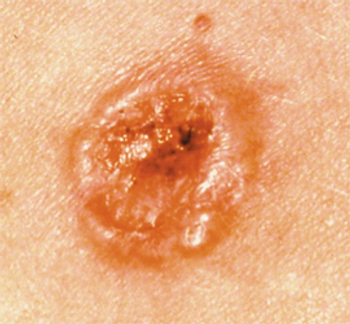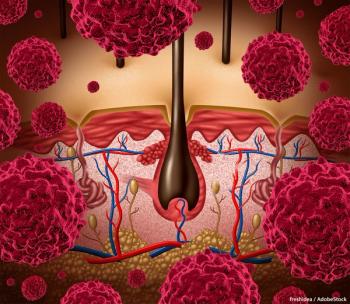
Significant Survival Improvement for BRAF-Mutated Melanoma Patients
Results from a phase II trial of vemurafenib for metastatic melanoma show a significant number of patients exhibiting a prolonged and durable response and a median overall survival of 16 months.
Vemurafenib (Zelboraf) was
Human metastatic melanoma cells stained with an H&E stain and magnified to 320x.
With a previous median survival time of 6–10 months in patients with metastatic melanoma, this second fast-acting option is an overdue welcome. What is unique about vemurafenib is the rapid onset of response: patients can see improvements within days or weeks and tumor shrinkage is witnessed as fast as within 2 weeks of commencing treatment.
While the data are encouraging, the median duration of follow-up for patients on vemurafenib in the phase III trial was only 4 months for the interim analysis. The question of durable response remained.
To partly answer the durability question, the results of a single-arm phase II trial of 132 patients, with a median follow-up of 12.9 months were
The results show a significant number of patients exhibiting a prolonged and durable response to vemurafenib therapy. The overall response was 53%, with only 14% of patients exhibiting signs of progressive disease. To put these results into context, previously, only about 10% of any metastatic melanoma patients responded to any type of treatment. The median overall survival rate was 15.9 months.
Toxicity of vemurafenib is generally tolerable and not severe in most instances. The toxic effects are predominantly manifested on the skin. Patients taking vemurafenib are photosensitive to light and must use precaution so as not to get severe sunburn from even minimal exposure to sunlight. The BRAF inhibitor is also
The other drug
Melanoma patients now have real options, including many new therapeutics in clinical trials, both immunotherapies and targeted oral treatments. One potential option may soon be the combination of ipilimumab and vemurafenib. The manufacturers of the two drugs have teamed up to do a phase I/II trial in 50 patients to test the combination. The hope is that taking both drugs together will result in a rapid onset of response, and continue to a substantial, and long-term one.
Newsletter
Stay up to date on recent advances in the multidisciplinary approach to cancer.


















































































